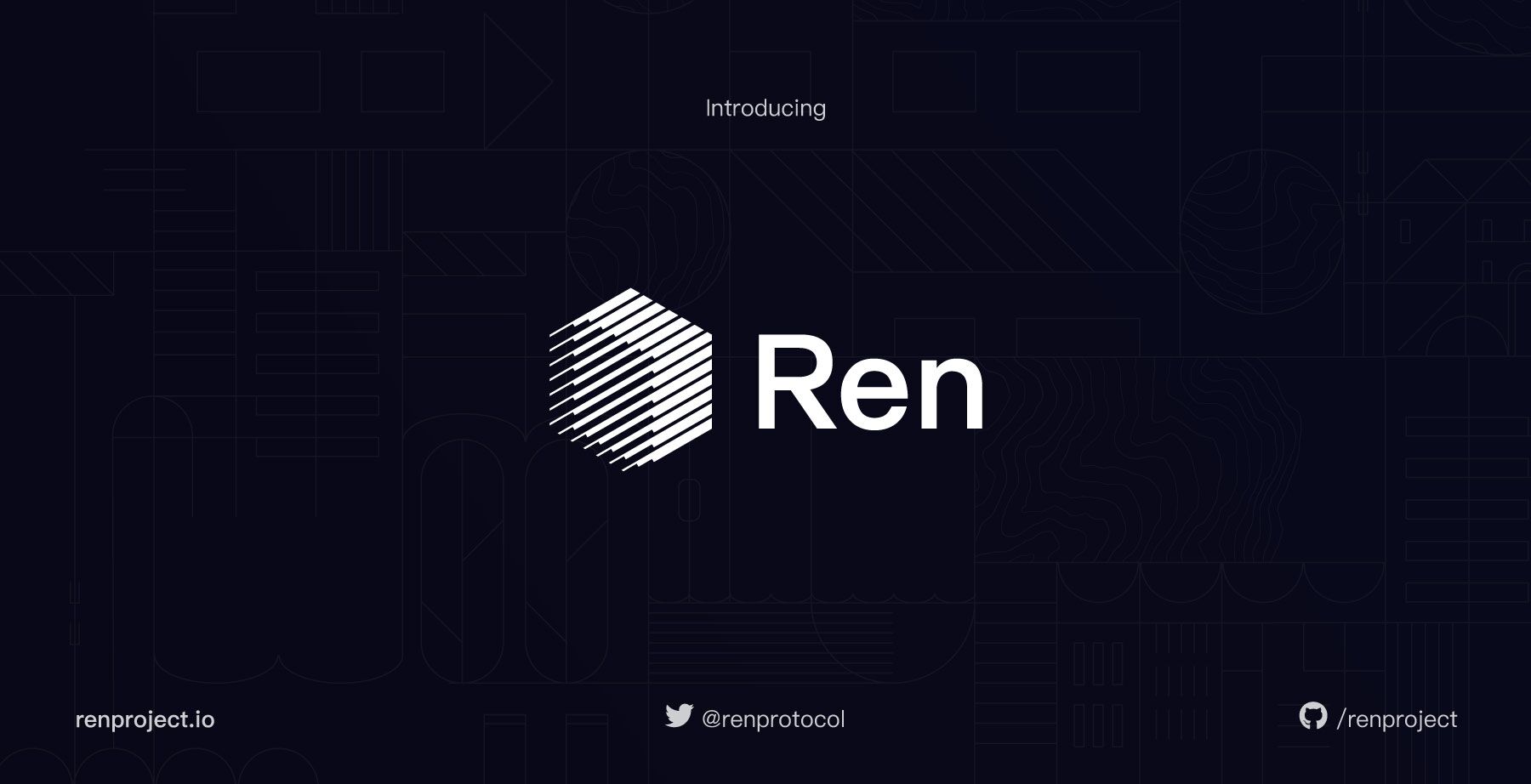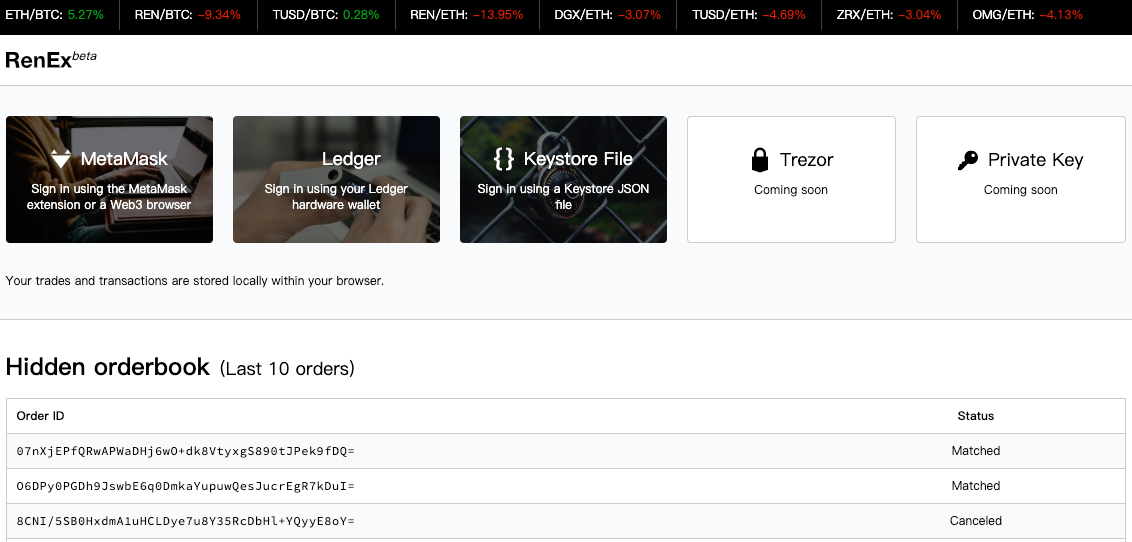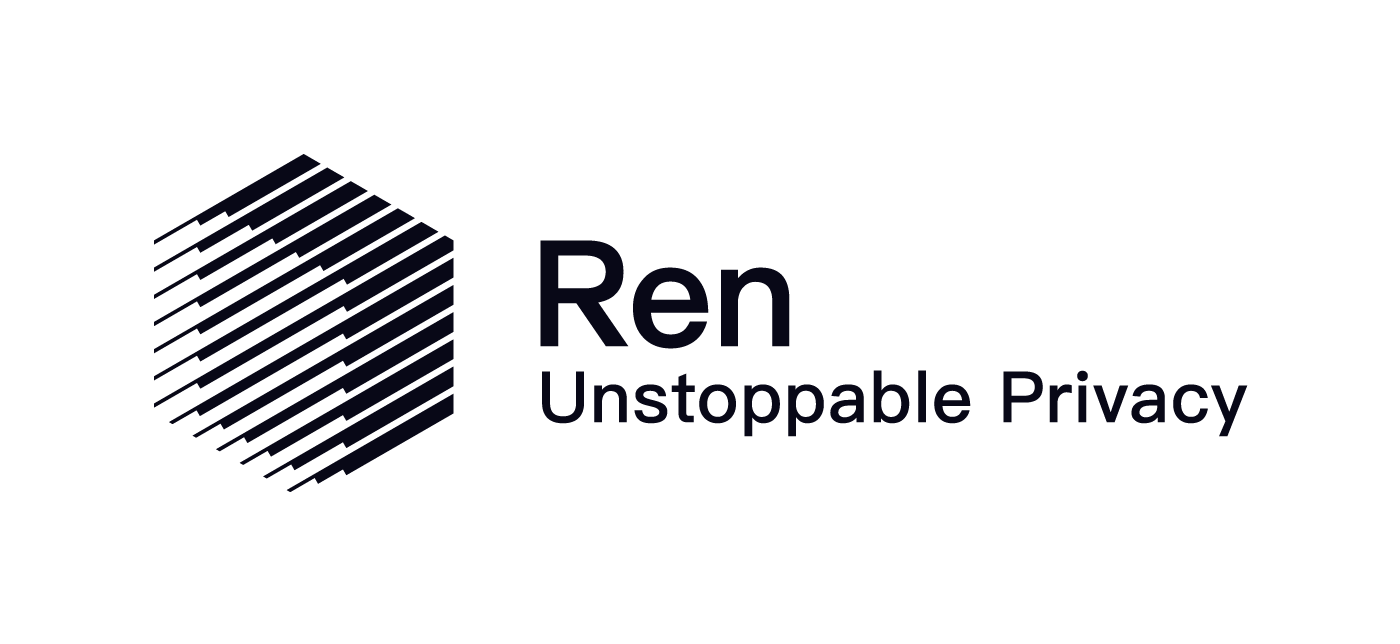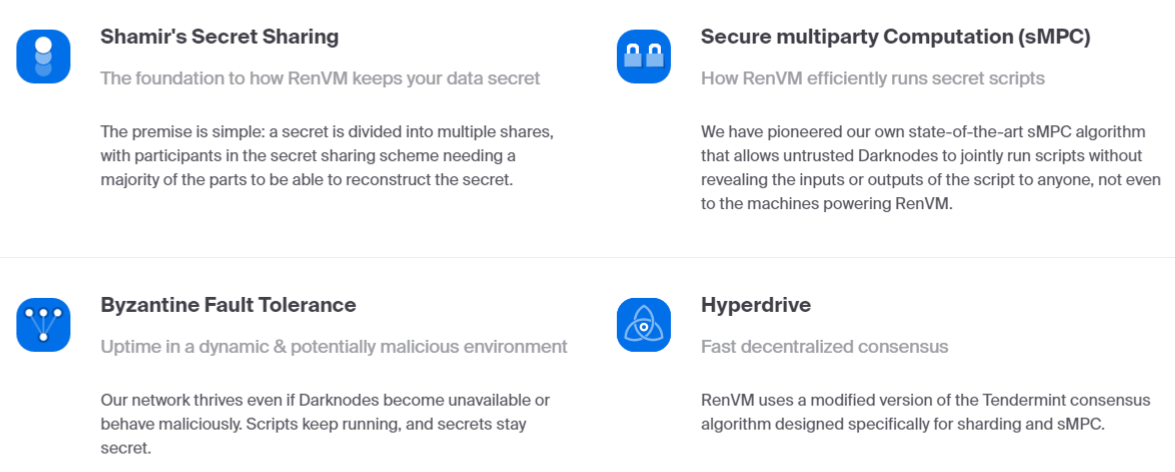Loong Wang, CTO and co-founder of Ren, talks about privacy and how RenVM brings interoperability to DeFi.
Hello! What’s your background, and what are you working on?
My name is Loong and I got into the crypto space around mid-2017, although I have been researching and working with distributed systems for a while. Before co-founding Ren with Tai (CEO)— whom I’ve been working alongside for many years on earlier projects — I was building programming languages for supercomputers, which was heaps of fun. But, I think it was somewhat inevitable that I would find myself in this industry. Blockchains and DAGs are some of the most exciting — definitely the newest — distributed systems around and after a decade there is still a tantalizing amount of new developments. I believe that if you have a passion for problem-solving, and a deep interest in a particular space, it is only a matter of time before you find yourself working there. For me, that space is crypto.
One of the biggest problems that Tai and I noticed in crypto was the lack of decentralized interoperability. There are lots of solutions out there to trade BTC for ETH/ERC20s/etc but none that embodied the whole point of crypto: trustlessness, permissionless, decentralization, privacy. But, there are a lot of people that want this. This is what we have solved with Ren. Using Ren, smart contracts on any blockchain can control tokens on other blockchains, allowing DEXs, DeFi, and dApps to leverage the liquidity available anywhere and everywhere. It does all this without compromising decentralization or privacy (or any of the goodies that are implicit to those two ideals).

What’s Ren backstory?
Ren began in late 2017 as Republic Protocol, a cross-chain decentralized dark pool; a secret exchange where traders could open orders without anyone knowing what their order was.
During development, we quickly realized that dedicating an entire network of machines to a single dark pool — consuming their compute power, storage, and network bandwidth — did not make sense. So, in 2018, we started expanding the protocol to allow anyone to build their own dark pool with its own set of rules. RenEx was the first of these dark pools, built and supported by us, and launched at the end of 2018.

We continued to advance the underlying technology in an attempt to solve the problems that still remained. A hidden order book was one thing, and it was a huge step forward, but the protocol needed more than that to capture a true use case. End-to-end privacy was needed; from opening orders to executing them. Cross-chain interoperability was needed; integrating liquidity from different blockchains, from BTC to ZEC to EOS to everything else, and forcing order execution (in ways that atomic swaps never will).
It was obvious that we had solved something much bigger, beyond the challenges faced by just dark pools. All decentralized finance (DeFi) applications need a way to solve privacy and interoperability and our solution could be made generic. While it solved privacy and interoperable liquidity for dark pools it also solves the same issues for DEXs, lending platforms, leveraging platforms, collateral platforms, and so much more.
This is exactly what we have done with the evolution of Ren, bringing privacy and interoperable liquidity to all of DeFi with RenVM.
What went into building the Ren?
It took us about nine months to get from our initial idea to a Mainnet implementation, which we released at the end of 2018. After that, we began evolving and improving the protocol to solve the problem of interoperability. We’ve been working on that for about 9 months now. It actually started as an experiment, building a general purpose virtual machine so that we could explore new possibilities for our technology. Different, and more efficient, ways to do secure multiparty computations. While working on this, we discovered a new way to work with ECDSA private keys inside a secure multiparty computation environment and that this solved all of the problems we were facing with cross-chain settlement and then some.
Since we began, and since we’ve evolved, we’ve only seen the need for decentralized interoperability become more and more desired. This has been echoed by a lot of the projects we have spoken with about adopting RenVM, which is a validation for market fit and motivated us to build hard and fast. We’re really focused on BTC/ZEC to Ethereum as we see this as one of the biggest needs, but we will be looking to expand to other blockchains too.

Our current reference implementations of RenVM are built in Go and Rust. Go because it is common in the blockchain space, very easy to learn, and has a thriving community so it’s the perfect choice for an open-source project in this space. Rust because it is technically powerful and amazing for writing high-speed code that you can be very sure is correct. Unsurprisingly, all our smart contracts are written in Solidity and we ensure that they are all audited by third parties before they are deployed. We also ensure that all of our pull requests are reviewed by another developer and internally we have a little game where we are constantly trying to attack each other’s code, or catch each other out sharing data that should only be shared securely.
Along the way, we’ve had help from our advisors but most importantly our community. Not just our awesome Telegram community, running nodes, asking hard questions, and always pushing us to improve, but also from the projects looking to adopt RenVM. We’ve received a lot of feedback on our protocol design, implementation of third-party tooling, and this has been extremely valuable to us.
So in simple terms, what exactly is RenVM and what problem does it solve?
In the simplest terms, RenVM brings interoperability to DeFi.
It comes in the form of an SDK and provides one of the only practical privacy + interoperability solutions that can scale, and is the only solution that allows for private computation over multiple inputs and multiple parties. For many decentralized applications, in particular decentralized finance, solutions for privacy and interoperability are fundamental pieces of the puzzle that are still missing. Trustless privacy and interoperability is absolutely necessary for achieving truly decentralized applications that are secure, usable, and liquid. Dark pools, DEXs, leverage, lending, collateralization, transferring digital assets and many other use cases are now made private, interoperable, and practical through RenVM.

RenVM essentially serves as an plug-in for decentralized finance and therefore, any DeFi application can incorporate RenVM’s capabilities into their applications and existing smart contracts.
What’s your business model?
The organization and its funding is centered around Darknode rewards. Darknodes earn fees for facilitating interoperability with RenVM and this is how the organization funds itself. Our incentive system is inherently tied to the success of the protocol, its adoption and to that of the Ren community. If you want to run a Darknode, it’s easy, and you can get started here.
As for competition, there are of course others in the space that are focusing on interoperability, but we believe our approach is quite unique in comparison to other interoperability solutions (Cosmos, Polkadot, Aion, etc.). These projects are amazing, but they typically require blockchains to explicitly opt-in to interoperability, which is a big ask for existing blockchains like Bitcoin, ZCash, Ethereum, and many others. RenVM works without any kind of opt-in required. With that said, we do believe RenVM will complement the above projects as it can serve as a pegged zone, bringing these existing blockchains into their ecosystems.
What’s your position on the regulatory landscape today?
Ren’s core product, RenVM, is a tool that facilitates permissionless, trustless, and fully decentralized interoperability between digital assets. This tool is utilized by DeFi applications (3rd parties) to facilitate cross-chain transactions for their users. A central entity does not control RenVM’s usage in any way (i.e it is permissionless and open sourced).
With that said, RenVM is a piece of “software” that runs on a decentralized network. It is a protocol, not a public facing means of exchange, so it will not be subject to the regulatory licensure requirements that decentralized exchanges may be exposed to. As you can imagine, exchanges and other DeFi applications that are consumer-facing may eventually have to tackle these issues within their respective jurisdictions.
As for the regulatory landscape; we do generally believe a global regulatory framework is useful, and if implemented correctly, will bring structure and prosperity to the digital asset ecosystem.
What are your goals for the future?
Our biggest goal right now is getting RenVM, our core technology, to a place that is stable and secure. This means lots of testing, peer review, and audits. Doing it right is a lengthy process, but when you’re dealing with people’s money there is no other way to do it.
At the same time, we have begun turning our focus to adoption. Our next biggest goal is engaging with projects that need Ren: getting their feedback on the design, on upcoming features and improvements, and helping them integrate their own technology. What we really want to see is an ecosystem where it no longer matters which blockchain a digital asset is on. When you set out to build something, you can do it on any blockchain and not worry about what digital assets you will be compatible with. The answer will be all of them.
What are your future thoughts for the DeFi market?
Bitcoin will stay on top. I don’t really see that changing, especially once people are able to use it with their favorite DeFi projects. I think something that is clearly becoming increasingly important is privacy. It has always been something that is important to people in the crypto space, but now more than ever I see a lot of people expecting it by default and being critical of technology that does not take it seriously. It is not without good reason.
Privacy is a problem that extends well beyond the boundaries of crypto, but in crypto we are uniquely positioned to prove that systems are behaving and keeping things secure. I think that we will begin to see people (and the teams behind DeFi projects) working, and come to an understanding, with regulators to ensure that privacy is not the goal for some while being the enemy for others. I’m confident this will happen, if for no other reason than that crypto is designed to be unstoppable.
Where can we go to learn more?
We have a great community and we encourage individuals to get involved! Come find us at:
- Website: renproject.io
- Twitter: renprotocol
- Reddit: r/renproject
- Medium: medium.com/renproject
- Telegram: t.me/renproject
If you are interested in integrating RenVM into your DeFi application, please fill out this form and we’ll alert you when it’s ready!
